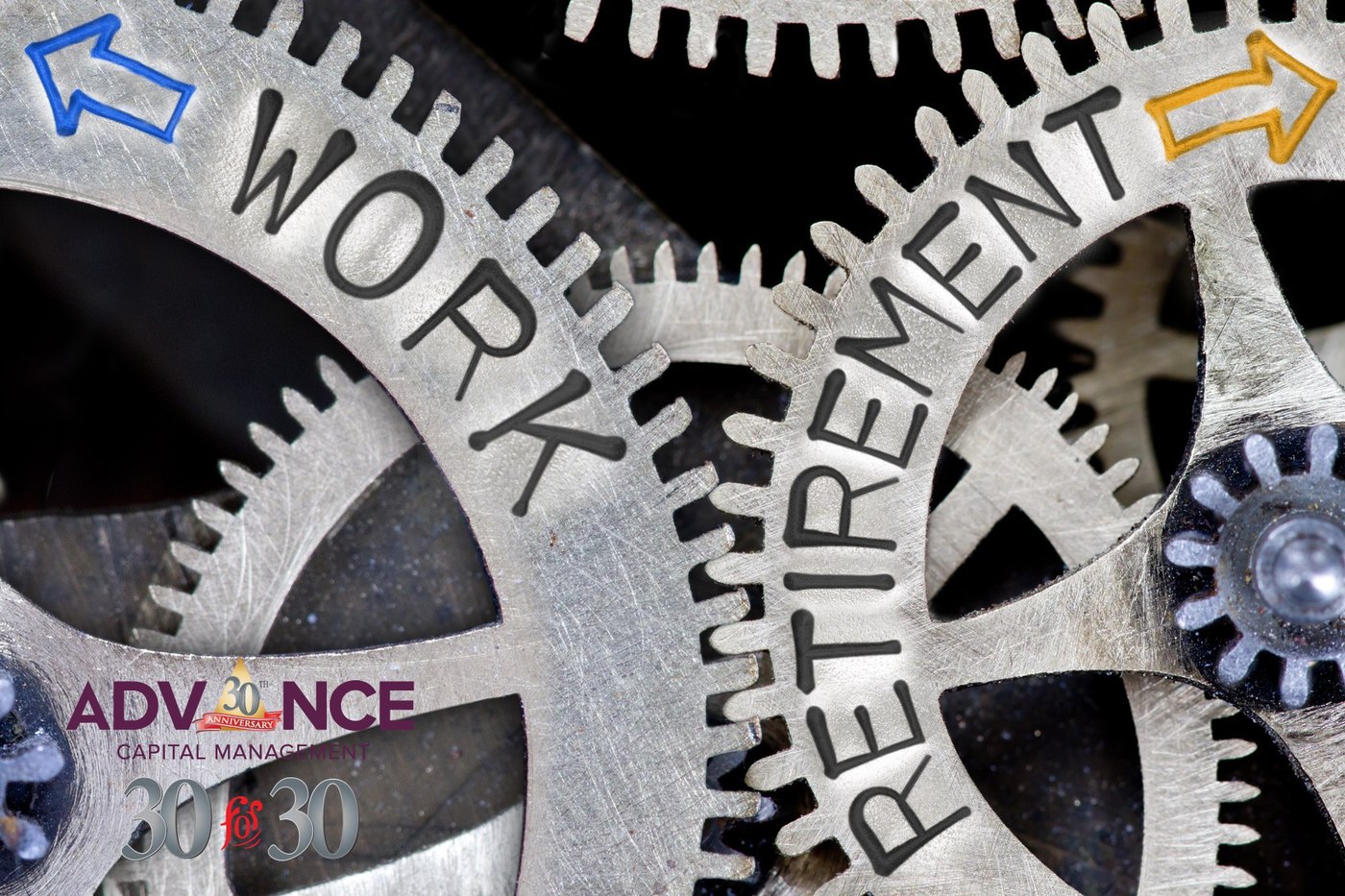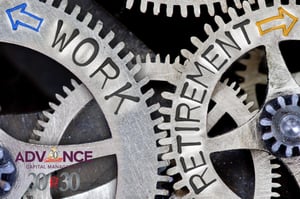Tips for Managing Your 401(k) Account
May 11th, 2017 | 4 min. read

 Pension plans have relatively gone the way of the payphone. You just don’t see many of them around anymore. The percentage of workers in the private sector whose only retirement account is a pension plan is now 4%, down from 60% in the early 1980s. The employer-sponsored retirement plan of choice today is the 401(k) account. When it comes to retirement and communications, people are now left to their own devices.
Pension plans have relatively gone the way of the payphone. You just don’t see many of them around anymore. The percentage of workers in the private sector whose only retirement account is a pension plan is now 4%, down from 60% in the early 1980s. The employer-sponsored retirement plan of choice today is the 401(k) account. When it comes to retirement and communications, people are now left to their own devices.
The downside is that most workers can no longer expect a steady pension income to sustain them through retirement. On the upside, a 401(k) account, when properly managed, gives you greater flexibility to build a future income stream that can make a major difference in your retirement lifestyle.
Here are tips for managing your 401(k) account.
Contributing to a 401(k) Account
- Start early.
Arguably, the most important step is to just start participating in your company’s 401(k) plan. Automatically allocating a portion of your paycheck to your account is a convenient way to save. Since you don’t see that money, you don’t risk spending it. Even if you can’t afford to save much, something is better than nothing. Because the sooner you start, the better able you are to benefit from compounding, which is the ongoing earnings you earn on your earnings.
- Get the full employer match.
You should try to contribute at least enough to receive the full employer match, if available. That is free money for your retirement.
- Eventually, try to max out your 401(k).
Putting away around 5% of your salary is a good start, but 10-15% is ideal. The maximum annual amount you can contribute to a 401(k) in 2017 is $18,000. Workers that are age 50 or older have the special benefit of contributing $6,000 more, known as catch-up contributions, for a total of $24,000.
Investing in a 401(k) Account
- Try to minimize fees.
Your 401(k) balance is reduced by the costs you pay on your investments and to administer your account. Consider fees when choosing your investments. The more you pay, the less you keep of what you earn.
- Start aggressive then reduce risk as you near retirement.
If you’re young, then growth should be your primary investment goal. Therefore, you should have a greater portion of riskier investments, such as stock mutual funds, in your 401(k) account for their higher return potential. Over time, gradually scale back risk by allocating your account to lower-risk investments like bonds so that you can better preserve what you’ve earned over a long career.
- Don’t try to pick winners.
When choosing investments people often simply pick funds that have the highest historical returns. They ignore the high risk usually associated with these funds and the terrible odds of choosing which ones will earn the most in the future. Most retirement savers should have a diversified portfolio comprised of a mixture of stock (high risk) and bond (low risk) funds. Diversification can lower your risk and provide a steadier return.
- Don’t load up on your company’s stock.
Investing in individual stocks and bonds represents significantly greater risk than investing in mutual funds. By investing in the stock of your company, you compound the level of risk in your total financial picture. After all, you don’t want to put all your eggs in one basket.
Managing Your 401(k) Account
- Check your account periodically to make sure you’re still on track.
Markets can be volatile. Over time, your investment amounts will move up and down. If they move too much, you may need to rebalance – sell what’s up, buy what’s down – to maintain your desired asset allocation.
- Leave it alone.
Avoid withdrawing money from your 401(k) account before retirement at all costs. Any amount you withdraw reduces the amount you have invested and growing for your future. It’s tempting to use the money for a variety of reasons, such as a down payment on a house or an emergency. But, the penalty for doing so is steep. If you withdraw money from a retirement account before the age of 59 1/2, you may be subject to a 10% early withdrawal penalty on top of the income tax you will have to pay on the distribution.
The same goes for 401(k) loans. Even though that money is paid back, any time you take from your retirement savings to pay for current expenses you put your retirement at risk. Plus, if you fail to pay it back on time, it’ll count as a normal distribution, which means it’ll be taxed as ordinary income and may be subject to the early withdrawal penalty. Instead, build a separate emergency fund that you can access at any time without penalties or fees. You’ll be better equipped to handle any unexpected expenses while staying on track toward retirement.
- If you need to make a withdrawal, know what qualifies to avoid unnecessary taxes.
Generally, there are limited circumstances where you can make a withdrawal from your 401(k) account while still employed, such as a financial hardship. A hardship withdrawal requires documentation and approval for a specific circumstance, including medical care for you or your dependents and costs directly related to the purchase of your principal residence, excluding mortgage payments. If you need a hardship withdrawal, contact your 401(k) provider as soon as possible to make certain your need qualifies.
- Have a financial plan.
You’re likely to have a list of financial goals that you want to fund with your 401(k) account. A financial plan can put you in a better position to achieve them. An HSBC Bank study found that those with financial plans amass nearly 2.5 times more retirement savings than those without a plan. Further, 44% of those with a financial plan save more money each year for retirement.
What to Do with a 401(k) Account When You Retire or Leave Your Job
- Consider a rollover IRA.
Rolling over a 401(k) into an IRA is common among retirees and those changing jobs. There are many reasons why you may want to roll over your savings to an IRA, including greater investment choices, more withdrawal flexibility and professional management by a financial adviser. It can also be a convenient way to consolidate several 401(k)s from numerous employers.
When done properly, no taxes apply to the rollover. To conduct a rollover, work with a financial adviser to ensure that it’s done properly and to avoid a possible taxable event.
- If, however, you have a good 401(k) plan, leave it.
If you like your 401(k) plan and your investment choices, or would rather avoid potential transaction fees and taxes from moving your money, you may choose to leave it where it is. And, if you retire from your company in the year in which you turn age 55 or older, you have full flexibility regarding withdrawals from your 401(k), meaning no early withdrawal penalties.
- Take your RMDs.
When you turn 70 ½, you must withdraw a certain amount each year from your traditional retirement accounts, including your 401(k) account. These are known as required minimum distributions, or RMDs. Failing to do so can result in a 50% penalty on your RMD amount.
LEARN MORESpeak with an Advance Capital adviser who can help create a comprehensive financial plan for all your financial goals – no cost, no obligation. Fill out the contact form or call 800-345-4783. Read these related articles: |
Advance Capital Management is a fee-only RIA serving clients across the country. The Advance Capital Team includes financial advisers, investment managers, client service professionals and more -- all dedicated to helping people pursue their financial goals.


